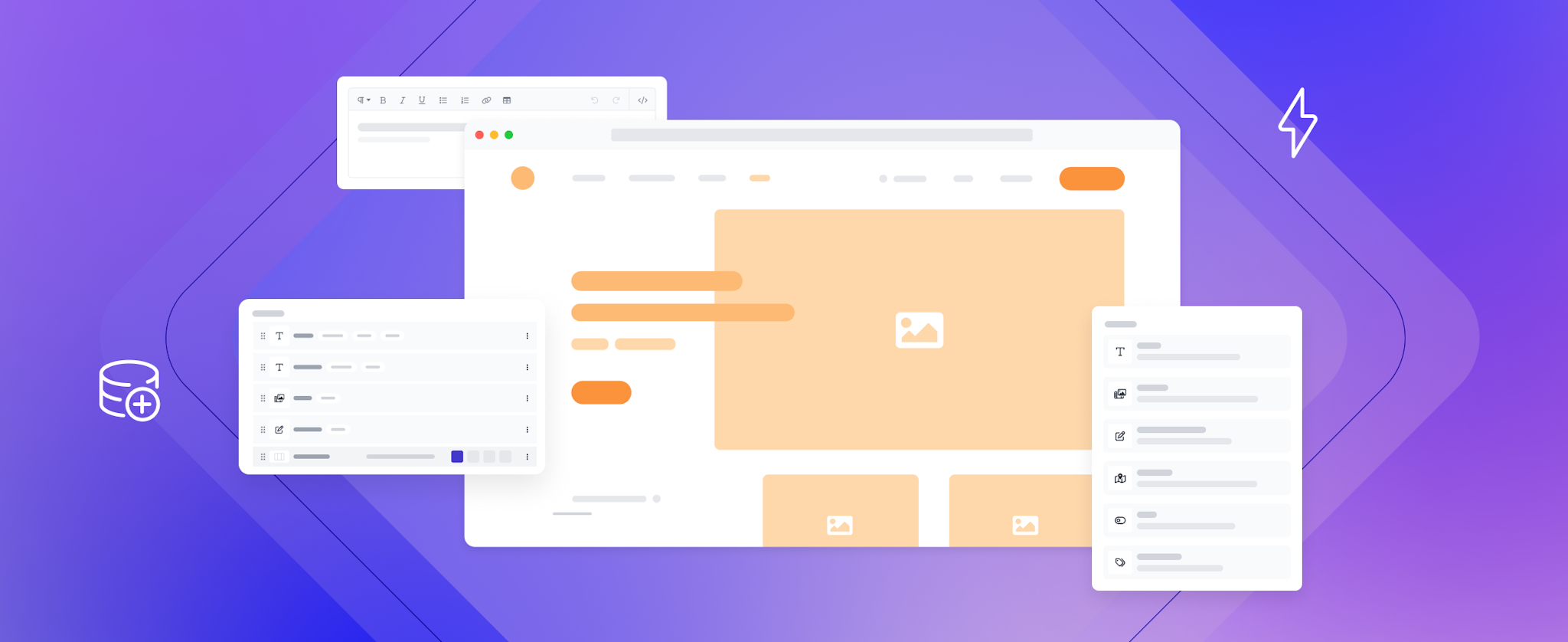Traditional CMSses
We know the endless options when deciding on a new content management system for your next website. And because of this infinite number of solutions, it can be difficult to choose. As a result, many organizations remain loyal to what they know: a traditional CMS such as WordPress or Joomla. Over 50% of all the websites in the world are published with a traditional CMS.
It makes sense because a traditional CMS sounds like an ideal solution. Here, the design and content are arranged within a user-friendly all-in-one solution. But here’s the catch: most traditional CMSses no longer suffice in our modern-day world. This has everything to do with their technological boundaries and creative restrictions.
Surely, we can hear you say we’re biased because we’ve developed a data-driven headless CMS. But let us make our case first, and you can make up your mind when we’re done.
What is a headless CMS?
First things first. Maybe you’ve heard about a headless CMS, and maybe you’re already familiar with the concept. But if not, it’s important to understand the difference between a traditional CMS and a headless CMS before you decide.
A headless CMS is a backend-only solution that disconnects the frontend of a website from the backend. The database is where you store your documents, and content is made available on any type of platform through an API. With a headless CMS, you can publish all kinds of content on every possible device and on every platform – including desktop websites, mobile websites, and applications.
Still unsure what a headless CMS is? In our article ‘How a headless CMS works’ we’ll explain the concept of a headless CMS in layman’s terms.
The benefits of a headless CMS
Now you know what a headless CMS is, it’s time to look at the benefits of a headless CMS for your new website. When building a modern-day online platform, you must keep up with rapid technological changes. This is where the major advantages of headless CMSs come in. The most valuable reasons for using a headless CMS are:
- Developer-friendly
Traditional CMSs often come with technological boundaries or require specific programming languages, limiting developers from doing their best work. Headless CMSs on the other hand give users freedom in choosing their preferred frameworks and integrating whatever solution they need through an API. This means a headless CMS is much more developer-friendly than a traditional solution. - Faster time-to-market
A headless CMS separates the front and backend of a website. This means frontend developers and backend developers can work on building your ideal website simultaneously. There are no codependences here, and ultimately, you’ll launch your new platform much quicker than a traditional CMS. - Re-design becomes easier
You’re designing a building the website that you need right now, but who knows what the future brings? Due to its decoupled structure, a headless CMS makes it much easier to redesign your platform. The backend stays put, while your frontend developer can easily reshape the frontend. - Creative freedom
A headless CMS is developer-friendly but also designer friendly. While a traditional CMS generally requires standardized templates, a headless CMS can display any frontend you want. This means it allows you to build exactly the website you have in mind – without any restrictions on the technological or creative side. This is a huge benefit especially if you want to build a unique website with an exclusive look and feel and outstanding customer experience. - Futureproof solution
The phrase ‘Who knows what the future brings’ also applies to the devices and platforms consumers are using. The digital world is evolving rapidly, and when you use a traditional CMS to build your next website, you’re stuck with it for the time being. A headless CMS optimizes your content for every platform imaginable – including those we don’t have today. Using a headless CMS to build your website ensures you’re set for the years to come - and the digital transformation that comes with it.
What do you decide?
So, now you know why we believe building your website with a headless CMS trumps using a traditional CMS. You are free to make up your own mind, just don’t forget it’s a futureproof solution, with limitless technological possibilities, endless creative freedom, and a fast time-to-market. So we’re curious: what will you decide?

